A pair of very rare, important and early modernist conference chairs with frame of nickel plated flat steel. Seat and back upholstered with original patinated red leather. These examples made to order 1935 for Lolland Falsters Industri & Landbrugsbank (Industrial & Agricultural Bank), Nykøbing Falster. H. 79 cm. W. 55 cm. D. 47 cm. (2) The Stockholm exhibition of 1930 brought functionalism and modernism into the mainstream of Danish architecture and design and had a profound impact on the works of Kaj Gottlob In the years around 1935 Gottlob was deeply involved in what was perhaps his most iconic project and today a landmark of modernism in Copenhagen - Knippelsbro - the bridge in the heart of Copenhagen. It is however little known that Gottlob in 1935 was also involved in modernism far away from the capital of Copenhagen. In the town of Nykøbing Falster he would design a complete interior that was lost over time. It was the interior for the bank “Lolland Falsters Industri -og Landbrugsbank” situated in a new, modern building in the town square. Inspired by the ideals of the Stockholm Exhibition, Gottlob designed all the furniture for the interior as well as the corporate identity, and for the first time he turned to the new materials of the modern age: steel and glass combined with leather. Steel furniture was as such not uncommon at this date, but it was generally in the Bauhaus style made of bent tubular steel, with endless variations. Gottlob however went in a direction that was both typical of his works, in essence very Danish and a path that foreshadowed the direction of Poul Kjærholm some 15–20 years later. He designed a range of furniture the way a cabinetmaker would do metal, that is made of solid steel finely welded and formed. Typical of him he chose forms that were basically classical. In this particular case, a metal “Klismos” chair combined with leather. This way the furniture became more a testament of the Danish tradition of craftsmanship in design, instead of new direction. Later Poul Kjærholm probably unaware of Gottlobs interior, would continue the path of designing furniture that signalled modernism but at the same time were fine pieces of craftsmanship. The present chairs that were used in the box room in the bank vault are the first pieces to re-appear from this lost interior.
Condition report on request. Please contact: design@bruun-rasmussen.dk
A pair of very rare, important and early modernist conference chairs with frame of nickel plated flat steel. Seat and back upholstered with original patinated red leather. These examples made to order 1935 for Lolland Falsters Industri & Landbrugsbank (Industrial & Agricultural Bank), Nykøbing Falster. H. 79 cm. W. 55 cm. D. 47 cm. (2) The Stockholm exhibition of 1930 brought functionalism and modernism into the mainstream of Danish architecture and design and had a profound impact on the works of Kaj Gottlob In the years around 1935 Gottlob was deeply involved in what was perhaps his most iconic project and today a landmark of modernism in Copenhagen - Knippelsbro - the bridge in the heart of Copenhagen. It is however little known that Gottlob in 1935 was also involved in modernism far away from the capital of Copenhagen. In the town of Nykøbing Falster he would design a complete interior that was lost over time. It was the interior for the bank “Lolland Falsters Industri -og Landbrugsbank” situated in a new, modern building in the town square. Inspired by the ideals of the Stockholm Exhibition, Gottlob designed all the furniture for the interior as well as the corporate identity, and for the first time he turned to the new materials of the modern age: steel and glass combined with leather. Steel furniture was as such not uncommon at this date, but it was generally in the Bauhaus style made of bent tubular steel, with endless variations. Gottlob however went in a direction that was both typical of his works, in essence very Danish and a path that foreshadowed the direction of Poul Kjærholm some 15–20 years later. He designed a range of furniture the way a cabinetmaker would do metal, that is made of solid steel finely welded and formed. Typical of him he chose forms that were basically classical. In this particular case, a metal “Klismos” chair combined with leather. This way the furniture became more a testament of the Danish tradition of craftsmanship in design, instead of new direction. Later Poul Kjærholm probably unaware of Gottlobs interior, would continue the path of designing furniture that signalled modernism but at the same time were fine pieces of craftsmanship. The present chairs that were used in the box room in the bank vault are the first pieces to re-appear from this lost interior.
Condition report on request. Please contact: design@bruun-rasmussen.dk
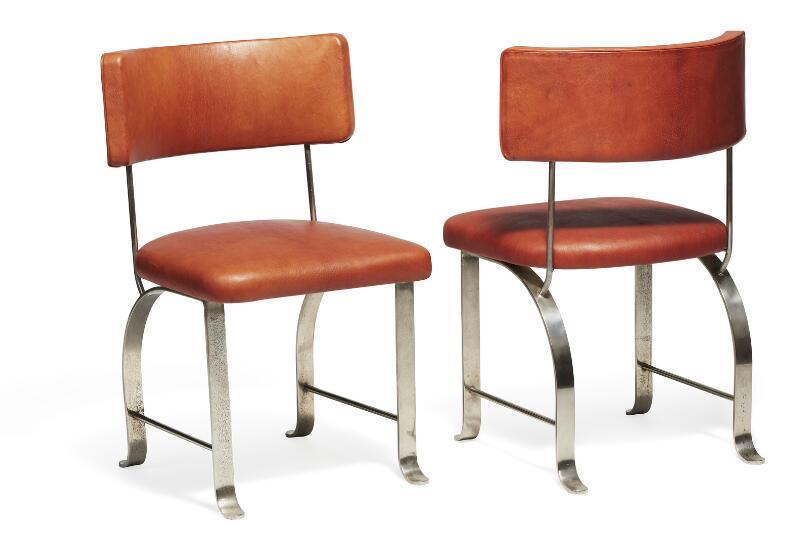
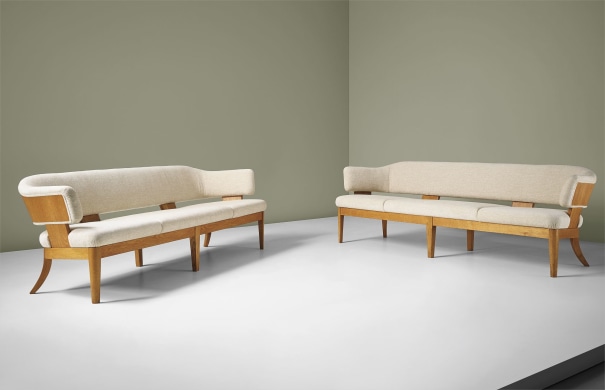



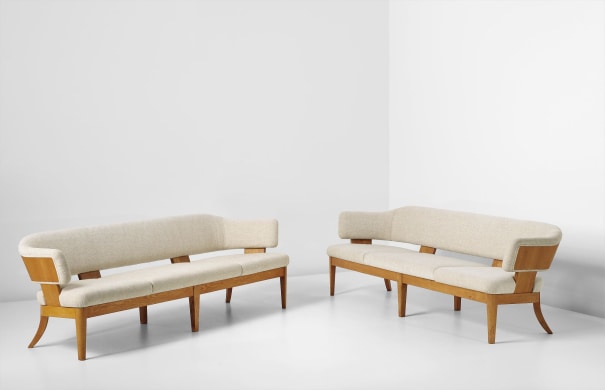

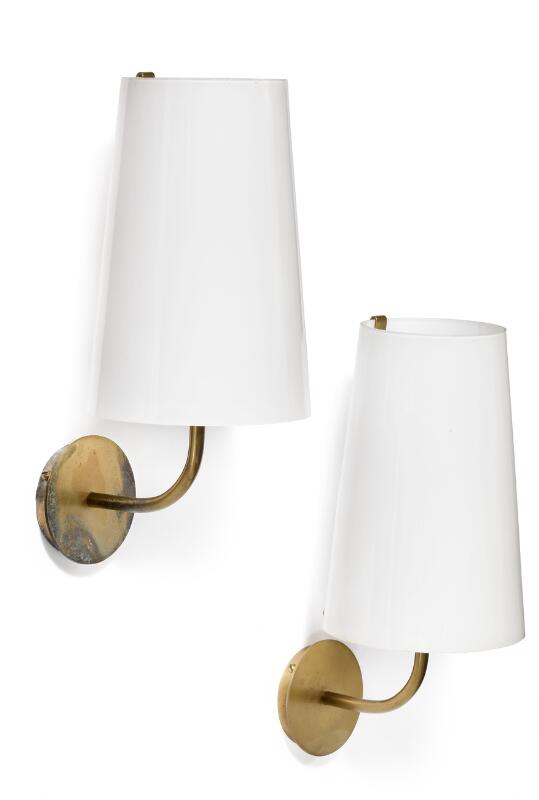
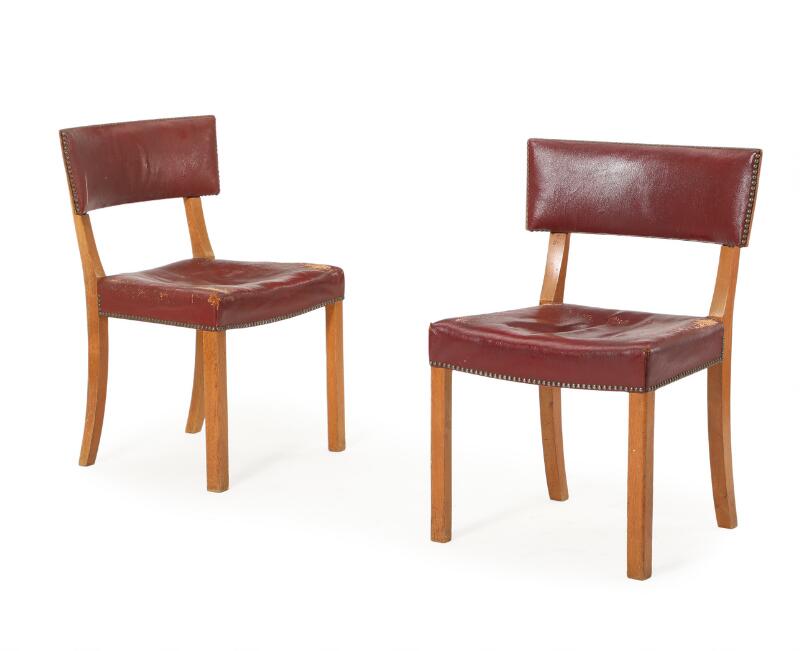
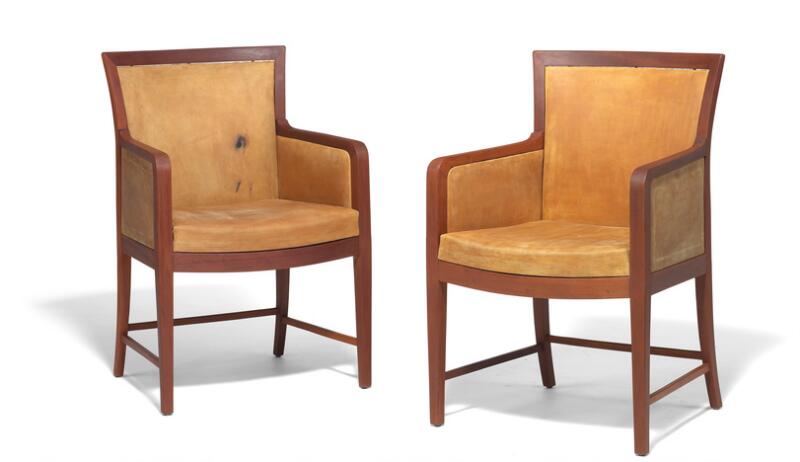


Try LotSearch and its premium features for 7 days - without any costs!
Be notified automatically about new items in upcoming auctions.
Create an alert